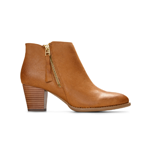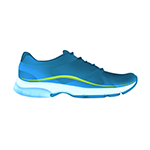
What Causes Heel Spurs?

A long walk can be the cure for the blues, a distraction from a stressful day, or just a chance to spend some healing time outdoors. But when you’re living with pain related to heel spurs, this seemingly small pleasure in life isn’t so easy to enjoy anymore.
But what causes heel spurs? Heel spurs are usually the result of strain on the ligaments of your foot. This strain can stem from a variety of conditions, but the end result is that your body builds up a deposit of bone tissue on the heel bone.1
Keep reading to find out more about what causes heel spurs, what your treatment options are, and how you can get started on the path to healing.
What Are Heel Spurs?
Whether you’re wondering what causes foot pain related to heel spurs or how to treat them, it helps to know what they are exactly. A heel spur is a bony projection that grows off the bottom of your heel bone, where the bone connects to the large ligament that runs between your heel and the ball of your foot.2 They affect about 15% of people, but because they occur inside the foot, you could have a heel spur without being aware of it unless you go to a healthcare provider to be diagnosed.1
While heel spurs can’t be cured or removed without a heel spur surgery, there are non-surgical treatment options available to you that can minimize discomfort and reduce strain on your ligaments.2
There are also preventative measures you can take to avoid the wear and tear that can cause heel spurs to form in the first place.
Causes and Risk Factors for Heel Spurs
While heel spurs are fairly common, the causes aren’t fully understood.5 However, researchers have identified some risk factors:4
- Obesity – Studies have found a correlation between BMI and heel pain. Excess weight puts additional stress and pressure on the ligaments in the feet.
- Aging – As we age, the padding in the soles of our feet that acts as a shock absorber deteriorates, leaving us vulnerable to excessive wear on the ligaments.
- Arthritis – Studies have found that heel spurs are commonly associated with certain types of arthritis, such as ankylosing spondylitis, rheumatoid arthritis, and osteoarthritis.
- Physical activity – Athletes are often at increased risk for developing heel pain which can lead to heel spurs due to their high levels of physical activity. Activities that include running and jumping on hard surfaces are especially strongly correlated. This risk for highly physically active people also increases with age.
- Unsupportive footwear – Poorly cushioned, broken-down footwear, or footwear without proper arch support may contribute to the risk of both plantar fasciitis and heel spurs.4
Symptoms of Heel Spurs
Heel bone spurs themselves usually don’t cause noticeable symptoms. If you’re experiencing heel pain, it may be caused by an underlying condition that can lead to the formation of heel spurs.5
Heel spurs were once thought to be inevitably linked to heel pain. However, more recent research has found that up to 1 out of 10 people have heel spurs that show up on x-rays, but only 5% of people with heel spurs experience pain.6 You may not even know you have a heel spur unless you see a physician for heel pain from a related condition, often plantar fasciitis.1
If you do experience pain from a heel spur, it will probably feel similar to plantar fasciitis pain.
How Are Heel Spurs and Plantar Fasciitis Related?
Plantar fasciitis and heel spurs are different conditions, but they are closely linked.
Plantar fasciitis is a condition that occurs when the ligament connecting your heel to the ball of your foot stretches or tears.7 Over time, the strain and inflammation of the ligament cause the body to create a calcium deposit on the heel bone where the ligament attaches. This calcium deposit is the heel spur, but plantar fasciitis is the root of the pain.
Symptoms that may indicate plantar fasciitis include:7
- Intense, stabbing pain in the heel
- Pain that worsens toward the end of the day and after standing too long
- Heel pain may spread through the entire foot, including the toes
- Pain that is exacerbated by standing on tip-toe
- Pain that often occurs when first standing and walking after a rest period, then gradually lessens as you move around
How Are Heel Spurs Diagnosed?
During an exam, your healthcare provider will take a history of your symptoms, such as previous heel pain or injury, as well as ask about physical activities that may be related.
A physical exam will most likely include examining the foot and ankle to locate the area of the pain. They may check for other typical signs and related physical conditions, such as:6
- High arch
- Less ability to flex the foot upward
- Soreness on the sole of the foot between the arch and heel
- Pain that improves when your foot is flexed down and worsens when you flex upward
To confirm the diagnosis, most healthcare providers will also order X-rays. This will also be used to rule out other possible conditions such as bone fractures or arthritis.6
Will Heel Spurs Go Away?
Without heel spur surgery, the bony growth of a heel spur won’t go away. However, surgery typically isn’t necessary for heel spurs themselves, since they rarely cause symptoms on their own.
The good news is, if you are experiencing discomfort from plantar fasciitis that caused your heel spurs, simple treatments you can do at home are highly effective at relieving symptoms. Over 90% of patients with plantar fasciitis find their condition improves within 10 months of starting at-home treatment.6
What Are the Treatment Options for Heel Spurs?
Although heel spurs can’t be removed or broken down without surgery, the heel spur itself isn’t likely to cause discomfort. If you’re experiencing heel pain, it’s most likely from another condition connected to the heel spurs.
Luckily, the pain from related conditions can often be relieved or minimized by non-surgical treatments. Let’s look at a few at-home heel spur treatment options your physician may recommend.1
Rest Your Feet
Resting your feet is a significant part of foot care for any type of foot pain and discomfort in the area. Since physical activity presents a higher chance of developing heel spurs, simply taking a break from athletic activities can do wonders. This allows your ligaments a chance to recover and ease the sharp pain you may be experiencing.
Be especially cautious about high-impact activities on hard surfaces. When you do get back to running or jogging:8
- Start slow to build up strength
- Stretch calves and feet regularly
- Opt for soft surfaces like grass or synthetic tracks that are better for shock absorption
Use Ice or Cold Packs
A cold pack placed against the bottom of your foot can help soothe the aches associated with heel bone spurs. If using an ice pack, always make sure to wrap the ice in a towel and avoid direct contact with the skin.
Try this easy step-by-step process for a soothing DIY foot massage:6
- Fill a water bottle with cold water or ice
- Roll it under each foot for 20 minutes at a time
- Repeat several times a day
Try Over-The-Counter Pain Relief
If the discomfort is impacting your lifestyle, your healthcare provider may suggest an anti-inflammatory pain reliever like ibuprofen or acetaminophen.
Wear Supportive Footwear and Arch Support Inserts
Like helping treat a stone bruise or claw toe, finding the right shoe can be a simple treatment option. Make sure your shoes fit correctly and have enough cushioning and support around the entire foot. Arch support inserts can also help protect your ligaments from excess strain, and styles are now available to fit almost any type of shoe.
Be sure to replace footwear regularly, especially athletic shoes. Exercise breaks down the cushioning and shock absorption in shoes quickly. The American Orthopaedic Foot and Ankle Society recommends replacing running shoes every 300-500 miles.8 Whatever your activity may be, the right training, athletic, or walking shoes for women and men can have a significant impact on your feet.
Practice Daily, Gentle Stretching Exercises
Tight muscles in your feet and lower legs are often related to plantar fasciitis. Regular, gentle stretching exercises for your calves and feet are a simple and effective way to alleviate discomfort.6
- Calf stretches – Standing in front of a wall, lean forward and brace your arms against the wall. Bend one knee and extend the other leg behind you. Keep your back heel flat on the ground. Move your hips gently toward the wall, feeling a stretch in your back calf. Hold for 10 seconds, then carefully and slowly switch legs. Repeat several times for each calf.
- Plantar fascia stretches – In the morning, sit at the edge of a chair and cross one foot over the opposite knee. Hold the toes of your foot and gently pull them toward you to flex the sole of the foot. You can also use a towel or yoga band to help reach your foot. Repeat this several times for each foot, holding for 10 seconds at a time.
Take Care of Your Feet with Vionic
Living with heel spurs can make every step challenging. But with a few simple changes, like comfortable shoes and foot stretches, you can be on your way to finding relief and enjoying your daily walk again.
If you’re ready to take the next step in the healing process, wear Vionic while you walk. Our footwear and insoles are designed to put the health of your feet first, with proper support, cushioning, and stability. That’s why our shoes have the American Podiatric Medical Association (APMA) Seal of Acceptance. With Vionic, you can trust that your feet will get the support they need for everyday comfort. Shop comfortable walking shoes for men and women today.
Sources:
-
- “Heel Spurs.” Cleveland Clinic. https://my.clevelandclinic.org/health/diseases/21965-heel-spurs
- Burgess, Lana. “Heel spurs: What you need to know.” Medical News Today. 24 December, 2017. https://www.medicalnewstoday.com/articles/320411
- Menz, Hylton B et al. “Plantar calcaneal spurs in older people: longitudinal traction or vertical compression?.”Journal of foot and ankle researchvol. 1,1 7. 11 Aug. 2008, doi:10.1186/1757-1146-1-7
- Agyekum, Edward Kwame, and Kaiyu Ma. “Heel pain: A systematic review.”Chinese journal of traumatology = Zhonghua chuang shang za zhivol. 18,3 (2015): 164-9. doi:10.1016/j.cjtee.2015.03.002
- “Calcaneal Spur Syndrome.” Atlas of Common Pain Syndromes.https://www.sciencedirect.com/science/article/pii/B9780323547314001353
- “Plantar Fasciitis and Bone Spurs.” Orthoinfo.https://orthoinfo.aaos.org/en/diseases–conditions/plantar-fasciitis-and-bone-spurs
- Tahririan, Mohammad Ali et al. “Plantar fasciitis.”Journal of research in medical sciences : the official journal of Isfahan University of Medical Sciencesvol. 17,8 (2012): 799-804.
- “10 Ways to Prevent Running Injuries.” AOFAS.https://www.aofas.org/news/press-releases/2020/09/01/10-ways-to-prevent-running-injuries
- “Bone spurs.” Mayo Clinic. https://www.mayoclinic.org/diseases-conditions/bone-spurs/symptoms-causes/syc-20370212












